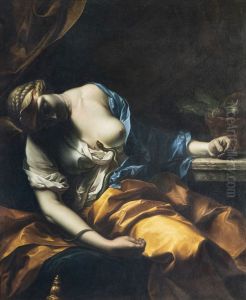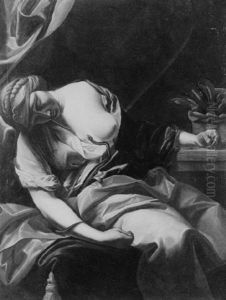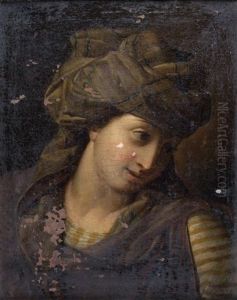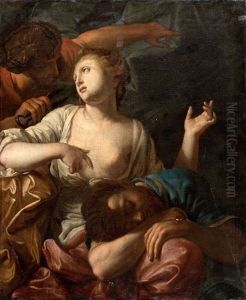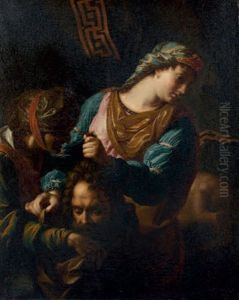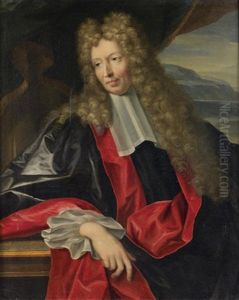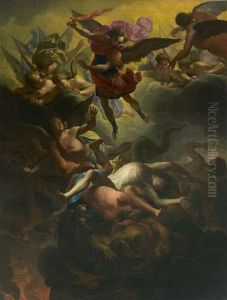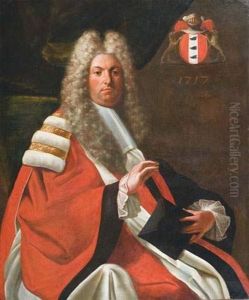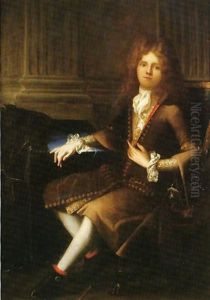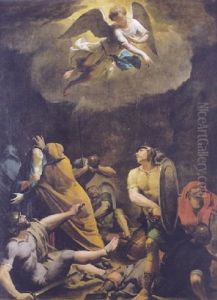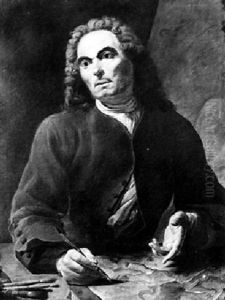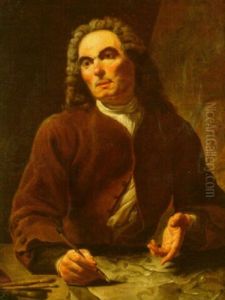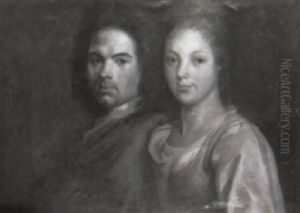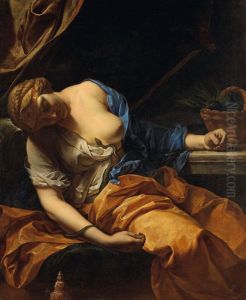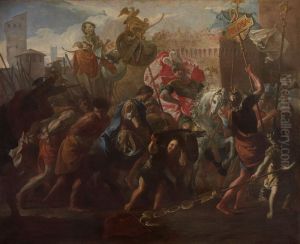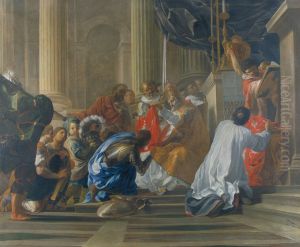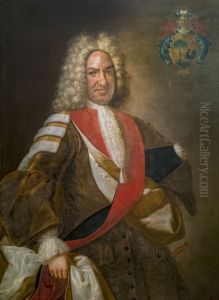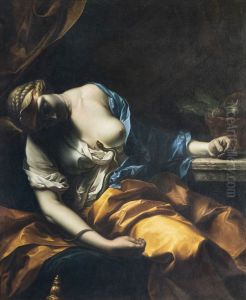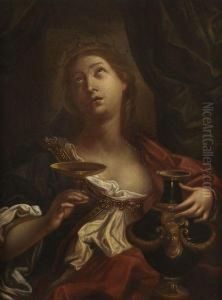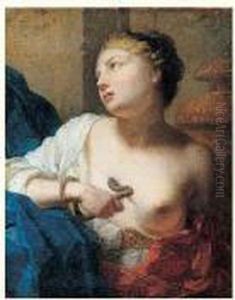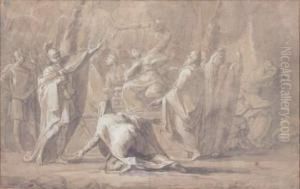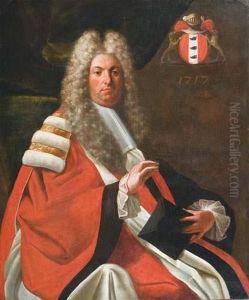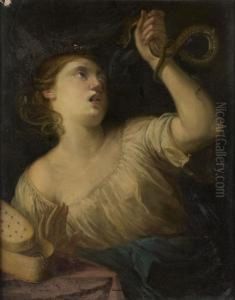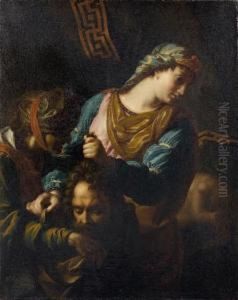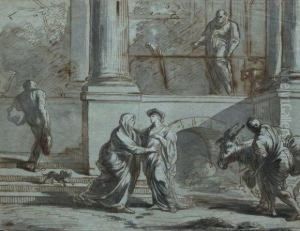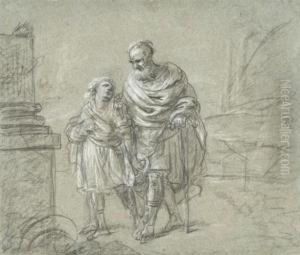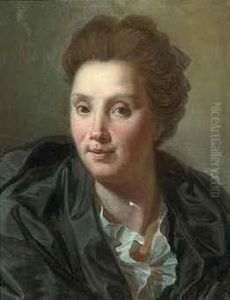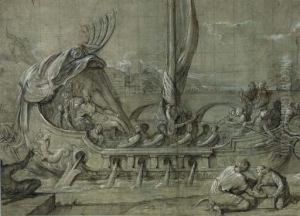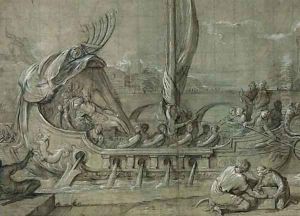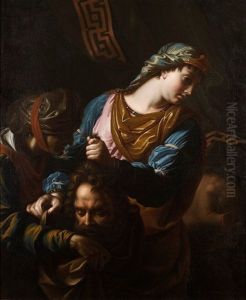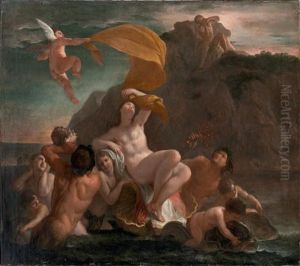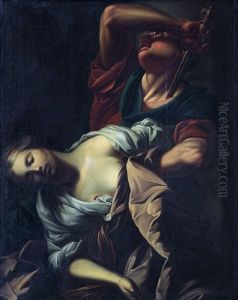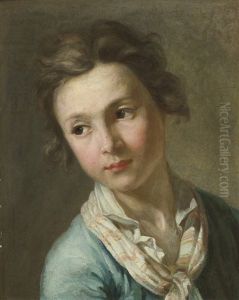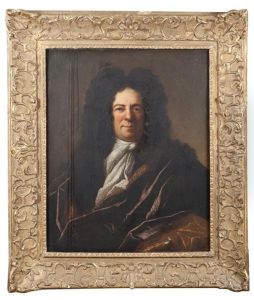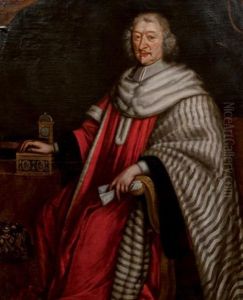Antoine Rivalz Paintings
Antoine Rivalz was a prominent French painter and engraver born in 1667 in Toulouse, France. He is often remembered as one of the significant figures in the French Baroque movement, bringing dynamism and a sense of drama to his compositions. Rivalz's early life was deeply influenced by his father, Jean-Pierre Rivalz, who was also a painter and provided his first lessons in art. This initial training sparked a lifelong passion in Antoine, who would later travel to Italy to further his studies, a common practice among aspiring artists of his era.
In Italy, Rivalz was particularly influenced by the works of the Baroque masters, absorbing the rich cultural and artistic heritage that would profoundly impact his style. Upon returning to Toulouse, he brought back with him not only the influences from Italian masters but also a refined technique that set his work apart from his contemporaries in France. Rivalz’s work was characterized by its vivid expression, dynamic compositions, and a bold use of color, aspects that were directly inspired by his studies and experiences in Italy.
Throughout his career, Rivalz received numerous commissions for religious and historical paintings, which were highly praised for their intricacy and emotional depth. His ability to convey complex narratives through visual art made him a sought-after artist among the religious institutions and nobility of his time. Among his notable works are the decorations he executed for the Capitole in Toulouse, which remain a testament to his skill and artistic vision.
Rivalz also played a crucial role in the artistic community of Toulouse, where he was instrumental in establishing the city’s Academy of Painting and Sculpture in 1726. This institution not only served to train the next generation of artists but also helped to elevate the status of Toulouse as a cultural and artistic center in the south of France. As a teacher, Rivalz was committed to passing on his knowledge and passion for art, influencing countless artists who would continue the traditions of the French Baroque and beyond.
Antoine Rivalz passed away in 1735, leaving behind a legacy that was not only marked by his own works but also by his contributions to the artistic community and education. His influence persisted through his students and the academy he helped to found, cementing his place as a pivotal figure in the development of French art during the early 18th century.
